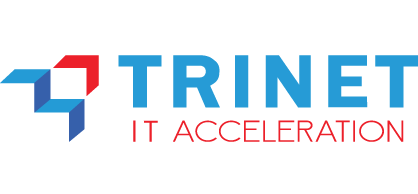Tech Innovation > Security > Identity & Access Management (IAM)

Identity & Access Management (IAM)
Without this solution, organizations face the following challenges:
Phishing & Credential Stuffing Attacks Leading to Identity Theft
Phishing and credential stuffing attacks result in identity theft and unauthorized access to accounts.
Unmonitored Access to Sensitive Applications and Data by Internal & External Parties
Lack of oversight over access to sensitive applications and data poses significant security risks from both internal and external parties.
Non-Compliance with Data Security Regulations such as GDPR, ISO 27001, and PDP Laws
Failure to comply with data security regulations can result in fines and legal issues for the organization.
Open Access Even After Employees or Business Partners Leave
Access remains open to sensitive systems and data even after employees or business partners are no longer associated with the organization.

Key Features & Capabilities
IAM strengthens security by controlling access, enforcing least privilege, and continuous authentication.
Show Details
a. Single Sign-On (SSO) & Unified Identity Management
- Enables users to access multiple applications with a single secure credential.
- Reduces user fatigue from remembering multiple passwords.
b. Multi-Factor Authentication (MFA) & Adaptive Access
- Enforces two-factor authentication to prevent unauthorized account usage.
- Uses risk-based authentication to adjust security based on location and device.
c. Privileged Access Management (PAM) & Role-Based Access Control (RBAC)
- Manages access based on user roles and privileges.
- Prevents abuse of access by users with high-level privileges.
d. Identity Governance & Lifecycle Management
- Ensures that only active users have access to systems.
- Helps organizations securely manage employee on-boarding and off-boarding processes.
e. Zero Trust Network Access (ZTNA) & Least Privilege Principle
- Implements Zero Trust to ensure the minimum necessary access for each user.
- Prevents lateral movement of hackers within the network in case of a security incident.

Business Benefits
IAM enhances security by controlling access, preventing misuse, and ensuring compliance.
Show Details
a. Enhance Security with Strict Access Controls
- Reduces identity theft and unauthorized access to business systems.
- Prevents credential-based attacks with multi-factor authentication & policy-based access.
b. Optimize Operational Efficiency & User Experience
- Reduces user friction with more practical Single Sign-On (SSO) systems.
- Prevents downtime caused by locked or inaccessible accounts.
c. Ensure Compliance with Regulations & Security Standards
- Meets requirements for GDPR, ISO 27001, PCI DSS, UU PDP, and other security standards.
- Assists security audits with well-documented access logs.
d. Reduce Insider Threats & Unauthorized Credential Usage
- Ensures only active employees have access to business systems.
- Avoids account misuse with privilege escalation detection mechanisms.

Use Cases
IAM offers proactive access control and identity management across industries for better security.
Show Details
a. Banking & Finance
- Implement MFA for login to banking & digital payment services.
- Manage access rights based on roles within the core banking system.
b. Healthcare Services
- Secure access to Electronic Medical Records (EMR) with identity-based authentication.
- Limit access for doctors, nurses, and administrative staff based on job needs.
c. E-Commerce & Retail
- Ensure secure access to online transaction systems for customers & staff.
- Prevent customer account theft through adaptive authentication.
d. Manufacturing & Supply Chain
- Secure access to ERP & IoT systems in manufacturing operations.
- Enforce Zero Trust policies in collaboration with vendors & business partners.
e. Government & Critical Infrastructure
- Control access to government systems with privilege access management.
- Ensure all system access is documented & auditable according to regulations.

How It Works
Identity & Access Management (IAM) ensures secure access, authentication, and authorization for users and devices.
Show Details
a. Identity Verification & Secure Authentication
- Uses MFA, biometrics, or OTP to authenticate users before system access.
- Detects suspicious logins with adaptive risk-based authentication.
b. Role-Based Access Control (RBAC) & Zero Trust Enforcement
- Defines access rights based on user roles (e.g., employee, partner, vendor).
- Ensures only authorized users can access specific systems.
c. Continuous Access Monitoring & Compliance Auditing
- Monitors user activity in real-time to detect anomalies or suspicious behavior.
- Generates automated audit reports for regulatory compliance purposes.
d. Privileged Access Management (PAM) & Identity Lifecycle Management
- Limits privileged user access to prevent abuse of admin accounts.
- Manages user account lifecycle from onboarding to offboarding.
Contact our experts for further information












